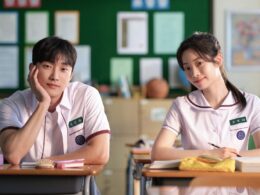Edited by Hwang Hong Sun
Translated by Kim Hoyeun
A long take, a shot lasting much longer than the conventional editing pace, requires everything to be perfect, including actors’ acting and camera movements. Which Korean movies left the audiences in awe with their impressive long takes? From famous works you will instantly recognize to works that came into the spotlight for their new attempts, let’s take a look at the films that presented memorable long takes.
Memories of Murder (2003) �” Paddy Field Scene

The so-called “paddy field long take” in the early part of the movie is a sequence in which actors’ quickness and director Bong Joon Ho’s tenacity shine bright. The scene, which realistically shows the chaotic situation at the crime scene by following detective Park Doo Man, was surprisingly created through Song Kang Ho and Byun Hee Bong’s ad-libs. Director Bong Joon Ho produced the scene by polishing all the ad-libs the two actors improvised on every take. On a side note, at the time, Song Kang Ho said that he enjoyed the last take but that he was sorry that they couldn’t use it due to technical issues, and I wonder what that scene would have been like.
The Villainess (2017) �” Opening Action Scene
The Villainess surprises everyone with its jaw-dropping action sequences and shows off its confidence from the very beginning. In the opening scene, the 8-minute action scene of killer Sook Hee entering the organization’s hideout unfolds brilliantly, ranging from shooting scenes that make you think you’re watching a shooting game to hand-to-hand fight scenes. To be exact, it’s not one long take but one continuous shot (a technique that connects several scenes to make them look like one long take), but there is literally no sense of displacement between the cuts.
The Man Standing Next (2019) �” Gungjeong-dong Safe House Shooting Scene

Based on the best-selling book of the same name, The Man Standing Next, which puts the 10.26 incident on the screen, features a 3-minute long take of the shooting scene inside the Gungjeong-dong safe house. Director Woo Min Ho filmed this is one cut, realistically delivering the characters’ behaviors and emotions. The camera raises tension by following Kim Gyu Pyung as he hurriedly runs around the safe house till the end, and Lee Byung Hun delicately performs even the smallest acts, drawing a dramatic sense of immersion. The exquisite camera walking and the actor’s seasoned performance gave birth to a scene representing the film.
Peppermint Candy (1999) �” Young Ho’s Tears

Director Lee Chang Dong’s Peppermint Candy intersects a man’s curvy life and pains in modern history on one screen. The image of young Young Ho lying under a railroad bridge and looking at the sunlight at the end is one of the most memorable scenes in the movie, and watching Seol Kyung Gu shedding tears for no reason brings a sense of hopelessness. This may be due to the unique filming method. The film, which uses reverse chronology to depict Young Ho’s life, was shoot according to the development. In other words, this last scene of young Young Ho was filmed last. Maybe that’s why. Young Ho’s tears seem to melt the emotions of Sol Kyung Gu, who watched Young Ho’s life in the order of progress.
Old Boy (2003) �” Hallway Fight Scene

Everyone will agree that Old Boy‘s hallway fight scene is one of the best long takes to come out of Korean films. This scene where Oh Dae Soo visits where he was trapped and fights in the hallway was initially intended to be directed in cartoon-like actions after taking several cuts, but when no satisfying scenes were taken at the scene, the director and actors decided to make it into a long take after much consideration. Instead of showing the intended “fancy” action sequences, the new long take focused on capturing Oh Dae Soo’s desperate and lonely fight. Thanks to this decision, Choi Min Sik was the one who suffered the most. He had to re-rehearse the action sequences he had learned so far and had to endure the long shootings till he was out of breath every time. The reactions to this long take, which was created after many trials and errors, were explosive. At the time of the screening during the Cannes Film Festival, applause poured out after the hallway fight scene, and it is said that famous directors like Tsui Hark and Quentin Tarantino even asked about the scene. Since then, Hollywood movies like Daredevil, Kingsman: The Secret Service, and Kong: Skull Island paid homage to the scene. Now, the hallway fight scene is evaluated as an action sequence that will go down in the history of film.



















